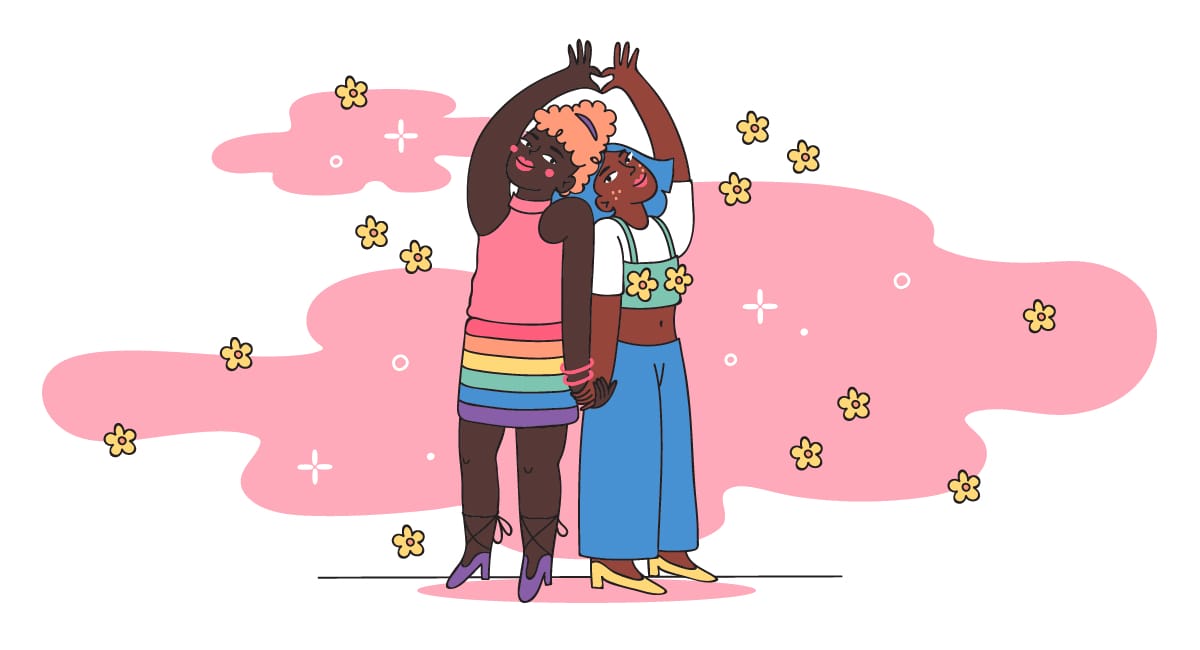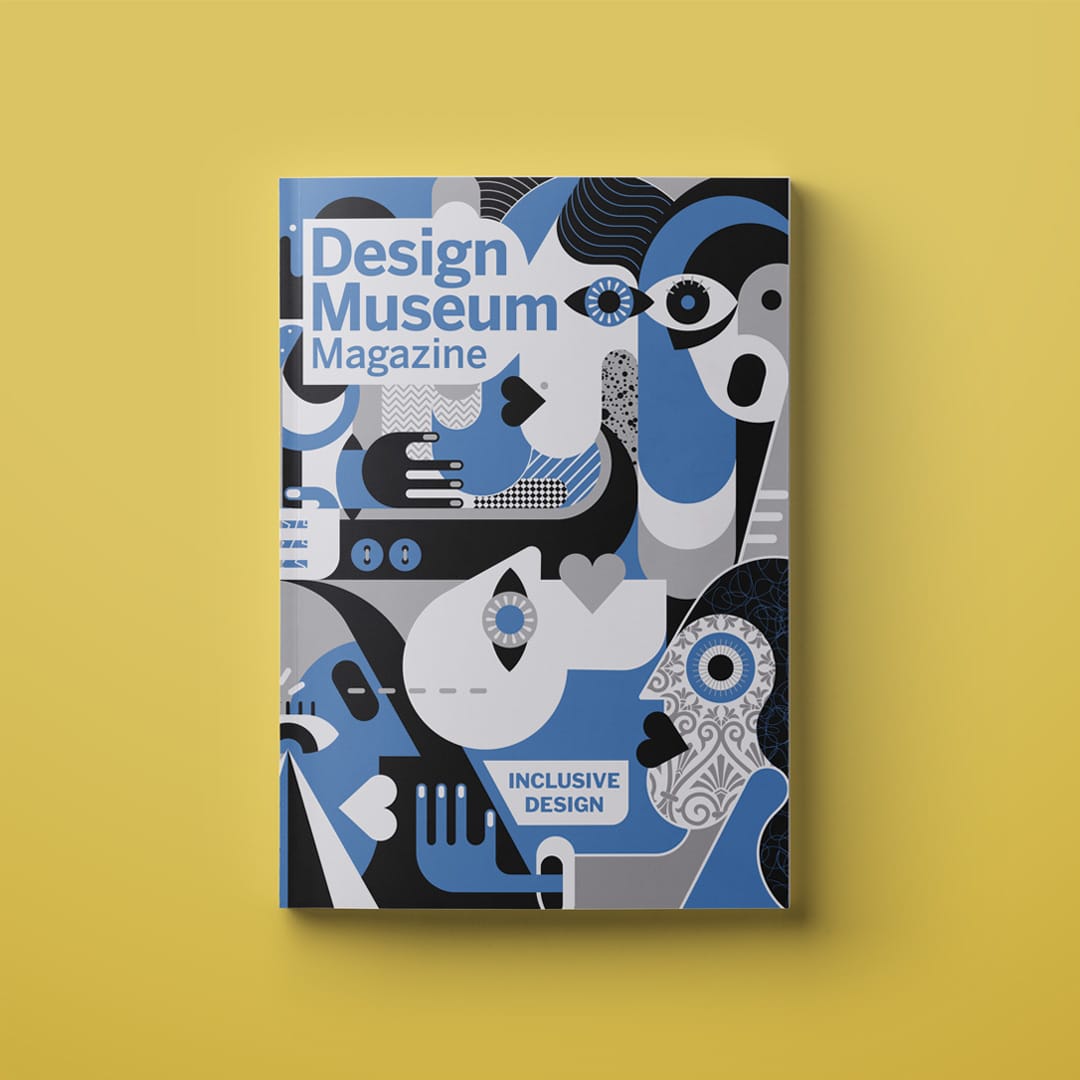Inclusive Design & The Pursuit of Intimacy: Finding Connection in the Modern World

By: Aidan Borer and Risham Nadeem
Intimacy – what is it and why is love so hard to find?
As customer researchers, we often talk about universal human needs. Intimacy— romantic intimacy—in particular, is one enduring human need that we are programmed to fulfill. We’re hardwired to seek companionship, and the way we pursue it is a microcosm for all interpersonal relationships. But just because it’s enduring doesn’t mean it’s unchanging.
With people staying single longer, hook-up culture, a growing subculture around non-monogamy entering the mainstream, and the rise of mobile technologies in facilitating connection, it’s clear the way we engage with intimacy is evolving. Intimacy is also incredibly personal. In the interviews that informed this work, we heard a wide range of definitions. To some, intimacy is a connection made for a night, a week, or a month. To others, the search for intimacy is for life-long companionship. For some, intimacy = sex. For others, it’s the emotional connection that makes it worthwhile.
The pursuit of intimacy under capitalism has led to the creation of multibillion dollar industries; romance publishing, romcom television and film production, the wedding industrial complex, matchmaking and dating services, sexual wellness, and more. Historically, these are industries that have prioritized the needs of white, cisgender, straight, middle class, suburban, and vanilla users. The needs, desires, and purchasing power of people who fall outside of this “norm” have been ignored. In 2023, we conducted ten interviews with a wider range of users. Men and women of color, queer and non-binary people, religious and bi-cultural folks; people whose lived experience doesn’t neatly fit into this paradigm.
Our initial hypothesis was that marginalized peoples’ experiences in the pursuit of intimacy—specifically engaging with dating apps—comes with more complex challenges, and we assumed those challenges would be the focus of our writing. However, through our conversations, this focus shifted. Instead, we’re going to use this space to celebrate “non-normative” dating practices—learnings from kinky, queer, Black and Brown, disabled, and bi-cultural daters. In doing so, we hope to shine a light on some of the ways they’re finding love (or lust) on their own terms.
It’s an uncomfortable truth that the design industry does not reflect the populations who experience the world we shape every day. While we must work to diversify our field, shaping a better future can’t wait. As such, it’s even more critical to realize when we are not designing for ourselves, and to find ways to empathize with all of our users. Empathy is one of the most powerful tools in a designer’s arsenal because it enables us to see the world through the eyes of those with a different lived experience than us. We want you—regardless of your own identity—to empathize with the folks whose stories we have collected and reflect on what mainstream dating might be like if we borrowed from their practices.
Celebrating the weird and wonderful; begging, borrowing and stealing from the fringes.
Through these conversations, we took away several “hacks” that marginalized people are applying to make dating a more joyful experience. We encourage you to reflect on what you could learn from them.
Some striking learnings came from practitioners of kink. One interviewee, Pascale, talked about getting into kink after divorce in their forties. They pointed out that even the most casual of kinky hookups require a level of respect, enthusiastically expressed consent, and open communication. When you have all three, those interactions are more comfortable because everyone knows what to expect and how to stop or de-escalate play if they choose to. What might Tinder look like if casual trysts were negotiated the way they are in kinky spaces? Imagine how much better sex we’d have if we could leave shame at the door?
“Community” can mean everything and nothing, but to queer people, community means the blurring of platonic and erotic, where there’s a freedom to define the interaction in a number of ways —as long as everyone’s having a good time. You might meet someone on Grindr, fuck, and then become friends. Or you might date as a networking opportunity. Mina, a 35-yearold bisexual woman, said “My straight single friends were envious of the fun I had. If it wasn’t a romantic match, there was a sense of friendship or camaraderie.” This is in complete opposition to the old joke that men and women can’t be friends because sexual attraction gets in the way. Clearly, queer people are navigating those attractions in much more nuanced ways.
Let’s consider more traditional practices. We spoke to bicultural and religious people, who talked about their learnings on communication. Leaving societal expectations at the door, they’re happier being direct about what they’re looking for. Alice doesn’t want to have sex outside of marriage, so while she might not disclose that on her profile, she does address it early on. She and Caitlin—a 30-year-old East Asian woman, who is straight and Christian—both agreed that religious compatibility was important to them, and communicated so early. Laila, engaged to a man her parents introduced her to via a modern arranged marriage, recognizes that “it might sound crazy” to get families involved within a couple of months, with a view to move towards marriage, but “I didn’t want to ‘chill’ for a couple of years. I wanted to do things in line with my beliefs and boundaries.” What might dating look like if we could signal our intentions without fear of judgment? How much easier might it be if we could involve trusted friends and family in our search for a partner?
Finally, we spoke to two romance novelists, Nisha Sharma and Hannah Bonam- Young, who told us that romance has always been a genre that champions marginalized voices. First, a space for stories about women, written by women, it’s now becoming one of the most diverse genres, reflecting its audience. Hannah, a disabled author whose book Out On A Limb features two disabled main characters, said, “I would have killed to have this book when I was 20 years old and trying to figure out love and sex and intimacy, and I think the more people are able to write from their own perspective, it opens up empathy from others into their experience and helps elevate everyone.” She goes on to say, “I’m not writing books for disabled people. I’m writing books for romance fans and hoping they pick up on experiences that I have had. My characters are disabled, but it’s just one part of who they are.” Hannah had low expectations for how the book would perform, but it’s already outsold older titles, and it’s getting rave reviews. There is much we can learn about empathy from romance publishing. What would “mainstream” dating experiences look like if they were designed empathy-first?

Rebranding the Revolution
As designers, we pride ourselves on crafting experiences that are intuitive, engaging, and meaningful. Yet, in the realm of online dating—a space where human emotions, aspirations, and vulnerabilities intertwine —we find ourselves at a crossroads. Does our design genuinely encompass the diverse spectrum of humanity, or have we inadvertently perpetuated the societal biases we sought to overcome due to the inherent profit motives of these platforms? And where does responsibility lie to make it better—on the brands who power these platforms, or the individuals who navigate them?
In the words of one interviewee, “The problem isn’t the platform. It’s men.” And yet, that perspective cannot absolve platforms and those who design them from an inherent responsibility to be good stewards of the experience they create. Pascale, a former architect, said, “If I designed a building that excluded people or created a space that is unsafe, I would bear legal responsibility for that. Why isn’t the same level of rigor applied to the designers of these kinds of virtual spaces?”
More so, it’s imperative to understand that the issues our interviewees surfaced— fetishization, erasure, racialized “preferences”— aren’t accidental oversights that can be ignored. They’re emblematic of deeper systemic biases that we, as designers, may unconsciously perpetuate. If our algorithms can predict potential matches based on intricate preferences, surely, we can rise to the challenge of fostering genuine inclusivity.
In an age where design is as much about ethics as aesthetics we must recognize and address the silent barriers – for instance, filters. They seem innocuous, perhaps even empowering. Want a partner of a specific height, body type, or ethnicity? Filter away! But what begins as personal preference soon morphs into societal prejudice. A ‘preference’ against dating certain ethnicities, for example, is racial bias repackaged. Should our designs, then, facilitate this?
To create a digital dating landscape devoid of harmful filters that accentuate body shaming or racial biases, we need to reassess the algorithms. The code that predicts potential matches can be recalibrated to challenge, rather than reaffirm, entrenched biases. What if the algorithm occasionally nudged a user towards a profile outside their expressed ‘preferences’, gently broadening their horizons?
It’s well known that designing for “extreme” users has resulted in some of the most successful designs—look no further than the OXO GoodGrip, designed for users with severe arthritis. Similarly, if we were to design around the safety of transgender women of color, the most frequent targets of violence, all of us would be safer.
A confluence of responsibility and a call to action
Design isn’t neutral. It’s a powerful mediator of values, ethics, and aesthetics. Designers must recognize that this power bears responsibility. We’ve already seen this in the unintended consequences and psychological impact of Tinder’s landmark swiping feature, which has now been incorporated into most popular dating apps. When we made an endless pool of headshots available to daters, we dehumanized real people— disproportionately, marginalized people. In the domain of dating apps, where emotions run deep, design failures aren’t mere inconveniences. They are affirmations of exclusion.
As designers, we are in a unique position to inspire and cultivate a mindset shift. As we craft products, we also sculpt behavior and perceptions. Let’s remember that at the heart of every interaction lies a human being, seeking connection and validation, and love. With dating apps, we’re not just shaping an interface. We’re shaping human connections, perceptions, and, indeed, society’s fabric. By weaving inclusivity and empathy into our work, we make a potent statement: Every individual, irrespective of their identity, deserves genuine connection, dignity, and love.
